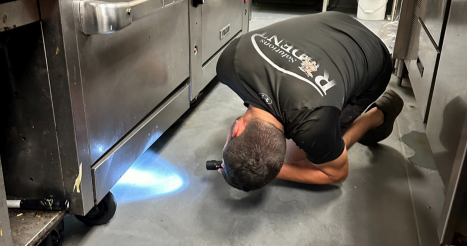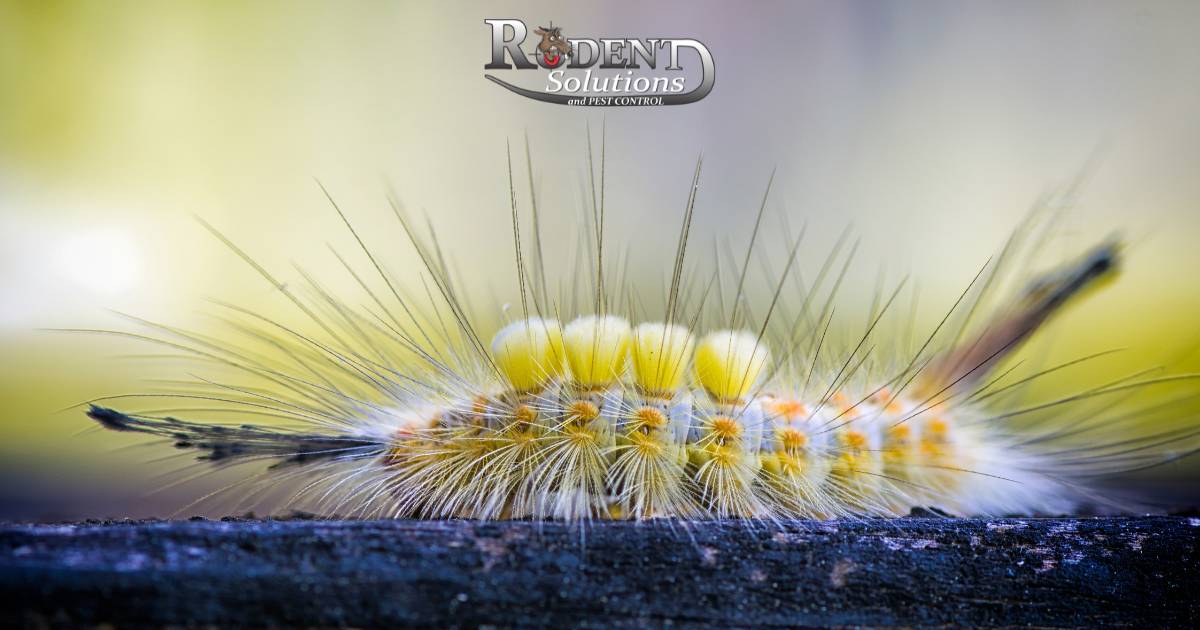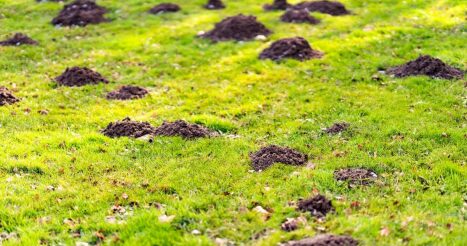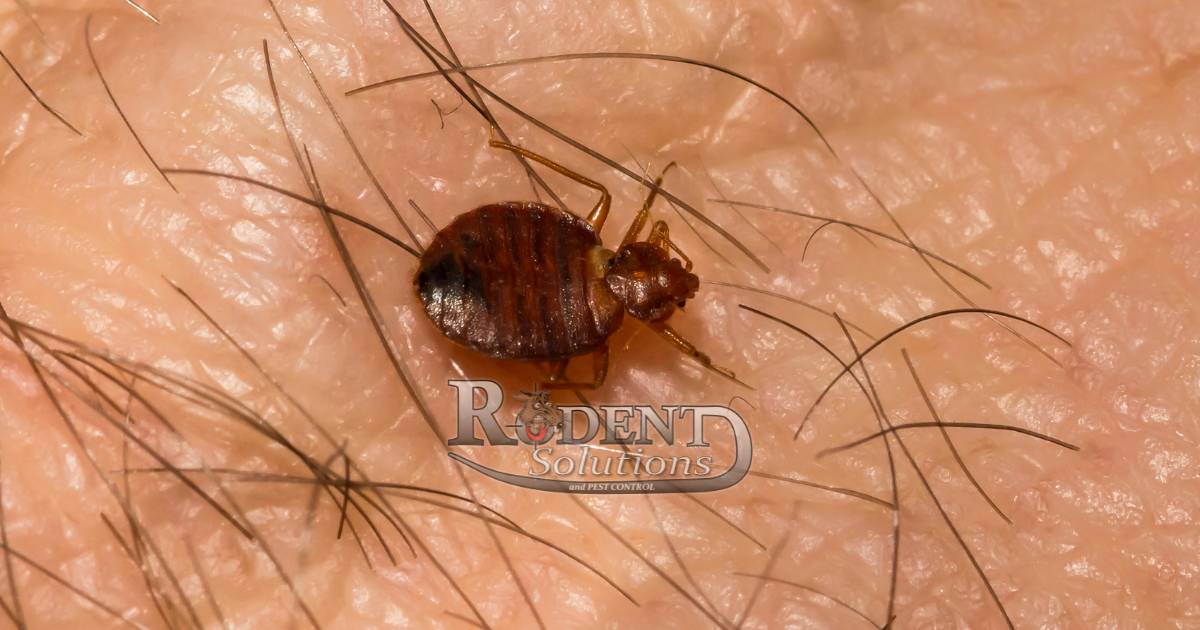People often ask us,”What do bed bugs look like” and “Can you see Bed Bugs?” While the answer is yes, it’s a little more complicated than you may think. Bed Bugs undergo multiple stages throughout their life cycle, and each stage presents a unique challenge when it comes to identification.
Proper identification is crucial when dealing with Bed Bugs in their various stages and also for identifying their bites. More often than not, misidentification can lead to a significantly worse infestation, especially if treated incorrectly.
Life Cycle
There are seven stages of the Bed Bug life cycle. In the early stages of the life cycle bed bugs are small. Bed Beg eggs and Nymphs are only between 1-2 MM. Because they are which is tiny enough to give off the perception that you may not be able to see them. While the early stages are hard to see with the naked eye, you can spot them if you know what you’re looking for.
Clusters of tiny, white eggs will be visible in areas in the mattress and box spring where Bed Bugs have access to an easy blood meal. An adult female Bed Bug can lay between 2-3 eggs per day throughout her lifespan. It generally takes most eggs anywhere between 7-10 days to hatch. About 97% of all Bed Bug eggs hatch successfully.
The entire life cycle from egg to adult requires anywhere from five weeks to four months, depending on temperature and availability of food (blood). If you can see clusters of eggs in various areas around your bed, this is a sign that you may have a significant Bed Bug infestation.
Once Bed Bugs reach the 3rd through 5th cycle of the Nymph stage, they start becoming more visible to the untrained eye. This is mostly due to size and whether or not they’ve had a blood meal. A Bed Bug in the Nymph stage takes on a significantly different color after it has had a blood meal. A Bed Bug that has not had a blood meal is yellowish and almost translucent with less pigment.
A Bed Bug that has had a blood meal will almost be dark red or bronze. For Bed Bugs to successfully molt, a blood meal is required. Blood meals occur at night and typically last from three to ten minutes. Once in the adult stage a Bed Bug can go up to 400 days without a blood meal under the right conditions.
Adult Bed Bugs are by far the easiest to spot, even if they haven’t had a recent blood meal. Adults are typically around ¼” of an inch, reddish-brown with flat, oval bodies. As they reproduce and the population becomes more prevalent, encounters with them become increasingly more likely.
They start moving into more obvious areas such as headboards, cracks & crevices, electrical outlets, and pillowcases. Under ideal conditions, Bed Bugs can live for over 400 days. However, 6-8 months is the typical lifespan for a Bed Bug.
What do bed bug bites look like?
Bed Bug bites are another sign that you may have a Bed Bug infestation. More often than not, the face, neck, arms, and hands are typically the areas where you will find the red bumps and bedbug bites. These areas may appear red and/or swollen and could be itchy bumps or burn. Bed Bugs excrete an anesthetic before feeding, so you won’t feel them when they bite you.
This can lead to delayed reactions and may even take a few days before symptoms appear. Approximately 50% of all people bitten by Bed Bugs don’t ever develop any symptoms. However, allergic reactions can occur and it’s best to seek out a dermatologist if bite symptoms worsen.
Signs of Bed Bugs
Aside from visible Bed Bugs and their eggs, there are other signs of bed bug infestations:
- Reddish-Brown Stains: Bed Bugs leave behind small, reddish-brown blood spots on sheets and mattresses, resulting from their fecal matter
- Musty Odor: An unpleasant, sweet, musty odor may be present in rooms with a bed bug infestation.
- Tiny Dark Spots: Look for small, dark spots on bedding, mattresses, or nearby furniture. These spots are fecal matter left by bed bugs and may appear like tiny ink dots.
- Blood Stains on Sheets: After feeding, bed bugs may leave behind small bloodstains on your sheets or pillowcases. These stains are a result of their feeding process and may appear as small dots or smears.
If you notice any of these signs, it’s essential to act promptly. Early detection can make the process of eliminating Bed Bugs more manageable.
How to get rid of bed bugs?
While there are multiple methods to help eliminate Bed Bugs, some are more effective than others. It’s always advised to call pest control professional to eliminate Bed Bugs.
- Professional Pest Control: Engaging the services of a professional pest control company is often the most effective way to tackle a severe bed bug infestation. We have the knowledge, experience, and equipment to eliminate bed bugs quickly. We may use a combination of methods, including chemical treatments, clean outs, heat treatments, and thorough inspections to eradicate the infestation.
- Chemical Insecticides: Chemical treatments are most frequently used. Quality product selection labeled for bed bug control is essential. We will apply the product to the areas where bed bugs hide, such as bed seams, wall voids, cracks, and crevices. Repeat treatments may be necessary to address eggs that hatch after the initial application and are included in our service.
- Heat Treatment: Bed bugs are sensitive to high temperatures. Professional heat treatments involve raising the temperature of the infested area to levels that are lethal to bed bugs. This method is effective in eliminating bed bugs at all life stages, including eggs. Heat treatments may require specialized equipment and should be conducted by trained professionals. We do not use use heat treatments due to the higher costs and inconvenience to our customers.
- Steam Cleaning: Steam cleaning is an effective, chemical-free method for killing bed bugs and their eggs. The high temperatures generated by steam can penetrate mattress seams, cracks, and other hiding places. Ensure that the steam cleaner reaches the necessary temperature to effectively eliminate the bed bugs. Unfortunately, steam treatments can not be used on all surfaces.
- Mattress Encasements: Encasing your mattress and box spring in bed bug-proof covers can help prevent bed bugs from reaching or escaping from these areas. These covers create a barrier, trapping any existing bed bugs and preventing new infestations and allow you to continue to use your existing mattress.
Dealing with Bed Bugs requires diligence, patience, and a proactive approach. By implementing preventive measures and addressing any signs of infestation, you can create a Bed Bug-free environment, ensuring a good night’s sleep for you and your family. Start by calling the bed bug exterminators at Rodent Solutions to help you rid yourself of these nasty pests. We will be with you from start to finish.

Pest/Wildlife Control 15 Years
Construction for 13 Years
Pest Control License JB299099
Wildlife License LW203605
Pest Management University: Founders and Masters
AAS Degree in Drafting Design with a Concentration in Building Construction
NWCOA Member (National Wildlife Control Operators Association)
NWCOA Rodent Standard Certified
NWCOA Bat Standard Certified
NCWOA Certified Urban Bird Management Operator
NWCOA Zoonotic Disease Standard Certified
Member of the National Pest Management Association (NPMA)
Bird Barrier Certified Installer
Bird-B-Gone Authorized Installer
OSHA 10 Training Completed for the Construction Industry
Aerial Lift Certified
Fall Protection Certified




